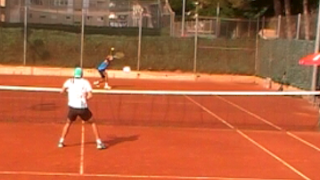Hey there, in this post i'm going to build on the previous blogpost where I briefly talked about some physio and osteopath treatment I had.
As the previous post states I had some peculiar injuries that my coach and I were trying to cure ourselves with stretching, ice, heat, massages, Pilates and joint mobilisation. Unfortunately none of these completely cured the injury (but they did help) so first we went to a physio recommended to me
 |
| Adductor (groin) strengthening exercises |
by a family friend. The physio, Carole McAthey, was fantastic. She found that my adductor strain had been caused by stiffness of the lumbar spine and Sacro-iliac joint. She gave my coach and I clear exercises to perform on the adductor and lumbar and to iniate Pilates, preferably based on the APPI course (this is the Australian Pilates organisation which is a kind of hybrid physio/pilates course). All of this helped considerably and cured all of my pains except the back which needed further treatment from an osteopath as it was skeletal rather than muscular (where a physio is better).
The osteopath, Nick Tuckley, I have used for many years and I haven't met a better osteopath. He confirmed the pelvis alignment was out due to the fall when I broke my ankle ligament in July. He stretched my L4 disc of the lumbar spine and instructed me to rest for at least 24 hours. For 40 minutes after the treatment I chose to lie down to let the body accustom to the new position of the skeleton before driving home. I personally believe this is vital after an osteopath session - you are paying £45 for 30-40 minutes of treatment, for that cost you should have the patience to let the body rest so the skeleton doesn't return to its previous position! I have a follow-up session 5 days after the first to see how the alignment in the pelvis is and hopefully if all goes smoothly I should be back training 3-5 days after that!
I wanted to write about my experience as I think sometimes one has to bite the bullet and pay the price to have experts look at your body and then cure you. Without these two professionals I would still be injured and no closer to being cured. Now I'm more than half cured and within the week I should be back training touch-wood. It was more than worth spending the money and in the future I will be quicker to go to a top physio/osteopath after an injury.




























